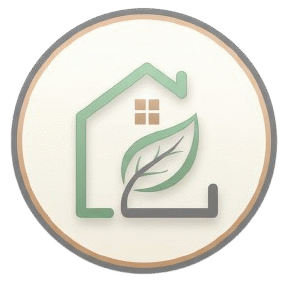In the field of dermatology, new terms and conditions often emerge to describe complex skin disorders. One such term that has gained recent attention is “Boylecheloid.” While it might sound unfamiliar to many, it is often discussed in the context of skin growths, scarring, and abnormal healing responses. Understanding Boylecheloid requires a deep dive into how our skin reacts to injury, how scars form, and why certain individuals experience excessive tissue growth.
This article explores the meaning of Boylecheloid, its potential causes, visible symptoms, risk factors, and possible treatment options. Whether you are a medical enthusiast, a patient trying to understand your diagnosis, or simply curious about skin health, this guide provides a comprehensive explanation backed by dermatological insights.
What is Boylecheloid?
The term “Boylecheloid” appears to describe an abnormal or excessive formation of scar tissue that grows beyond the boundary of the original wound—similar to a keloid. The word itself seems to combine “Boyle,” possibly referencing a specific medical study or skin condition, and “chelodid,” which is an older term for keloid.
In simpler terms, Boylecheloid can be understood as a type of overgrown scar tissue that forms after an injury, acne, piercing, surgery, or even a minor skin irritation. Instead of healing normally, the body’s collagen-producing cells overreact, resulting in a thick, raised, and often shiny growth on the skin.
How Boylecheloid Forms: The Science of Abnormal Healing
To understand Boylecheloid, we first need to look at how scars normally develop.
When the skin is injured, the body immediately triggers a healing process involving several stages:
-
Inflammation Phase – The area becomes red and swollen as the body fights bacteria and removes damaged tissue.
-
Proliferation Phase – Fibroblasts produce collagen, a key protein that repairs the wound.
-
Remodeling Phase – The collagen is reorganized, and the skin surface smooths over time.
In a Boylecheloid, this normal process becomes exaggerated. The fibroblasts don’t stop producing collagen even after the wound has closed. As a result, excess collagen accumulates, leading to a raised, firm, and often darker patch of skin.
This abnormal growth extends beyond the original wound boundaries, unlike hypertrophic scars that stay within the original injury site. The key difference lies in the uncontrolled, tumor-like behavior of scar tissue formation in Boylecheloid.
Causes of Boylecheloid
There isn’t a single definitive cause of Boylecheloid, but several factors are known to increase susceptibility. Let’s examine the most common ones:
-
Genetic Predisposition
People with a family history of keloid or cheloid scars are more likely to develop Boylecheloid. Certain genetic markers influence how the body responds to injury and how much collagen is produced. -
Skin Type and Ethnicity
Individuals with darker skin tones—especially those of African, Asian, or Hispanic descent—are more prone to developing such scars. The reason lies in differences in fibroblast activity and melanin concentration. -
Injury or Trauma
Any form of skin injury, whether it’s a cut, acne lesion, burn, or piercing, can trigger Boylecheloid formation. Even minor scratches in susceptible individuals can lead to significant overgrowth. -
Hormonal and Immune System Factors
Hormonal fluctuations during puberty, pregnancy, or thyroid disorders may alter wound-healing behavior. Similarly, immune system imbalances may contribute to abnormal scarring. -
Chronic Skin Conditions
Repeated inflammation from acne, folliculitis, or eczema increases the risk of Boylecheloid formation since the skin undergoes multiple healing cycles.
Common Symptoms of Boylecheloid
The symptoms of Boylecheloid can vary depending on the severity, size, and location of the scar, but the following characteristics are commonly observed:
-
Raised, firm texture: The affected area feels thick and rubbery.
-
Shiny or smooth surface: The skin over the scar often appears stretched and glossy.
-
Discoloration: The scar may appear darker (hyperpigmented) or lighter (hypopigmented) than the surrounding skin.
-
Itching or tenderness: Many patients report mild to severe itching or a burning sensation.
-
Progressive growth: Unlike normal scars that stabilize over time, Boylecheloid continues to grow beyond the original wound.
-
Pain or tightness: Large Boylecheloids may restrict movement, especially on joints or the chest.
The condition can affect any part of the body, but it’s most commonly found on the chest, shoulders, upper back, earlobes, and cheeks.
Diagnosis of Boylecheloid
Diagnosis usually begins with a visual examination by a dermatologist. The doctor will look for key features like overgrowth beyond the wound margins, color, and texture.
In some cases, a biopsy might be performed to confirm that the tissue is benign and not a different type of growth (like a dermatofibroma or skin tumor). Imaging tests are rarely necessary unless the lesion is unusually large or causing deep tissue involvement.
Treatment Options for Boylecheloid
Treating Boylecheloid can be challenging because these scars tend to recur after removal. However, various medical and cosmetic techniques can help reduce their appearance and discomfort.
1. Corticosteroid Injections
One of the most common treatments involves injecting corticosteroids directly into the scar tissue. This reduces inflammation, slows collagen production, and flattens the growth over time. Regular sessions—every 3–6 weeks—are typically needed for best results.
2. Cryotherapy
This technique involves freezing the Boylecheloid using liquid nitrogen. The extreme cold destroys the abnormal tissue and reduces its size. It works best for smaller scars.
3. Laser Therapy
Laser treatment uses focused light to reduce redness, improve texture, and break down excessive collagen. It is especially effective when combined with steroid injections or silicone gel therapy.
4. Surgical Excision
For large Boylecheloids, a doctor may recommend surgical removal. However, this method carries a high risk of recurrence, as new scar tissue may form again. To minimize this risk, post-surgery radiation or steroid injections are often used.
5. Silicone Gel Sheets
Silicone-based treatments—either gels or adhesive sheets—help soften and flatten scars by hydrating the tissue and reducing tension. They are easy to apply and widely available for home use.
6. Pressure Therapy
In certain cases (especially after burns or piercings), pressure garments or earrings can help prevent excessive tissue formation. Constant pressure reduces blood flow to the scar, which limits collagen overproduction.
7. Radiation Therapy
Low-dose radiation therapy may be used after surgical removal to prevent recurrence. It’s a specialized approach that must be supervised by a dermatologist or oncologist due to potential side effects.
8. Natural and Home Remedies
While not a replacement for medical treatment, some natural ingredients may provide relief:
-
Aloe vera: Reduces itching and promotes healing.
-
Vitamin E oil: Improves skin elasticity and appearance.
-
Tea tree oil: Has anti-inflammatory properties.
-
Apple cider vinegar: May help reduce redness (use with caution on sensitive skin).
Prevention Tips for Boylecheloid
Preventing Boylecheloid is much easier than treating it once it forms. Here are a few tips to keep in mind:
-
Avoid unnecessary skin trauma. Be cautious with tattoos, piercings, or cosmetic surgeries if you have a history of keloids.
-
Treat acne and skin conditions early. Reducing inflammation minimizes scarring risk.
-
Protect healing wounds. Use sunscreen and avoid picking or scratching scabs.
-
Use silicone gels or pressure dressings on healing wounds to reduce abnormal scar growth.
-
Consult a dermatologist immediately if a raised scar starts to form.
Living with Boylecheloid: Emotional and Social Impact
While Boylecheloid is not life-threatening, its psychological impact can be significant. People with visible scars, especially on the face or neck, often experience self-consciousness or reduced confidence. Social anxiety and emotional distress are common, particularly among young adults.
Dermatologists recommend combining medical treatment with emotional support, including counseling or support groups, to help individuals cope better. Remember, scar visibility doesn’t define beauty—proper management and self-acceptance are key to confidence.
Future Research and Medical Advances
Researchers continue to explore innovative ways to treat Boylecheloid and prevent recurrence. Some promising areas include:
-
Gene therapy to regulate collagen production at the molecular level.
-
Stem cell-based wound healing to promote balanced tissue regeneration.
-
Topical anti-fibrotic creams that stop fibroblast overactivity.
-
Nanotechnology drug delivery for targeted and long-lasting results.
As these technologies advance, the future for Boylecheloid management looks promising—offering hope for more effective, less invasive solutions.
Conclusion
Boylecheloid represents more than just a cosmetic concern—it’s a complex dermatological condition rooted in abnormal wound healing. Understanding its causes, symptoms, and treatments helps patients take informed steps toward recovery. While complete elimination may not always be possible, modern medicine offers numerous effective options to minimize its appearance and discomfort.

